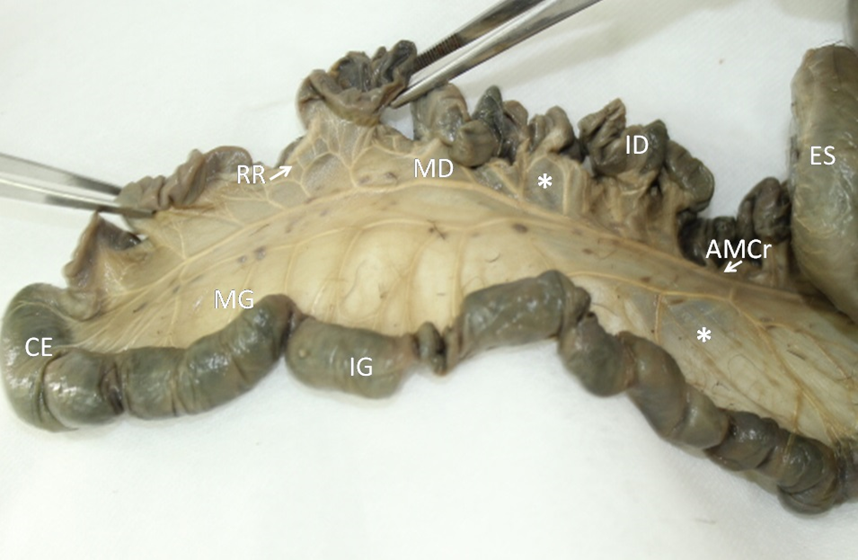Intestine vascularization of sloth (Bradypus variegatus SCHINZ, 1825)
DOI:
https://doi.org/10.21708/avb.2020.14.2.8772Resumen
Common sloth (Bradypus variegatus) is a mammal that belongs to the superorder Xenarthra, typical from neotropical regions, with geographic distribution from Honduras to northern Argentina. Our study aimed to describe the intestine blood supply of these Bradipodids in order to collaborate with the clinical-surgical for these animals. For that, ten animals, included four females and six males, were sampled from the collection of the Anatomy Division, Department of Animal Morphology and Physiology, Universidade Federal Rural de Pernambuco DMFA/UFRPE. Corpses received formalin, preserved in saline solution and subsequently dissected for description of the cranial (AMCr) and caudal (AMC) mesenteric arteries. Sixty percent of sloths presented AMCr and AMC, cwhile 30% of them had intestines (small and large) irrigation from the common mesenteric artery (AMCo), an arterial trunk from which AMCr and AMC originated. For 10% of the specimens, the entire intestine was vascularized only by AMCr. Along the AMCr branches, there were arched arrangements, with arches size reductionat the level of the small intestine. Therefore, B. variegatus presents anatomical variations regarding the irrigation of the intestine, which can be made from AMCr and AMC, from the AMCo arterial trunk or to a lower frequency exclusively through AMCr branches.
Descargas

Descargas
Publicado
Número
Sección
Licencia
Autores que publicam na Acta Veterinaria Brasilica concordam com os seguintes termos: a) Autores mantém os direitos autorais e concedem à revista o direito de primeira publicação, com o trabalho simultaneamente licenciado sob a Licença Creative Commons Attribution que permite o compartilhamento do trabalho com reconhecimento da autoria e publicação inicial nesta revista. b) Autores têm autorização para assumir contratos adicionais separadamente, para distribuição não-exclusiva da versão do trabalho publicada nesta revista (ex.: publicar em repositório institucional ou como capítulo de livro), com reconhecimento de autoria e publicação inicial nesta revista. c) Autores têm permissão e são estimulados a publicar e distribuir seu trabalho online (ex.: em repositórios institucionais ou na sua página pessoal) a qualquer ponto antes ou durante o processo editorial, já que isso pode gerar alterações produtivas, bem como aumentar o impacto e a citação do trabalho publicado (Veja O Efeito do Acesso Livre).


 Esta obra está licenciada com uma Licença
Esta obra está licenciada com uma Licença 